How to organize lighting?
Before choosing lamps, you need to decide on their functional purpose.
- General lighting (or central, when lamps are located under the ceiling), directional (or task, when the light falls on a certain surface), and decorative (designed to create the desired atmosphere) are usually used to decorate a living room.
- The convenience of using light depends on the location of the switches. Their installation should be thought out at the stage of creating a design project. The optimal options for placing switches are considered to be: the space near the door, the walls near the sofa for relaxation, as well as the work area.
- It is worth remembering that one chandelier in the living room is not enough. Overhead lighting does not give much light, so there should be at least two sources.
- Light helps to visually enlarge a small living room with a low ceiling. One such method is to use floor lamps. It is also recommended to install LED lighting around the perimeter of the ceiling to visually deepen it.
What kind of lamps are suitable for the hall?
With the help of different types of devices, you can create several types of lighting in the living room.
Spotlights
Individual objects (paintings, collections of objects) or certain areas can be effectively emphasized with the help of spotlights. They can be suspended, built-in or movable on a rail. Rotating lamps can be adjusted horizontally and vertically. Whether the spotlights will cope with the main lighting (for example, built into a suspended ceiling) or serve as directional sources depends on their number and location.
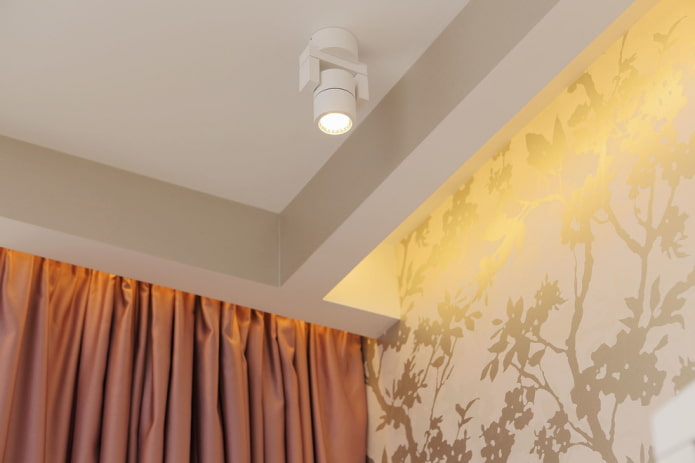
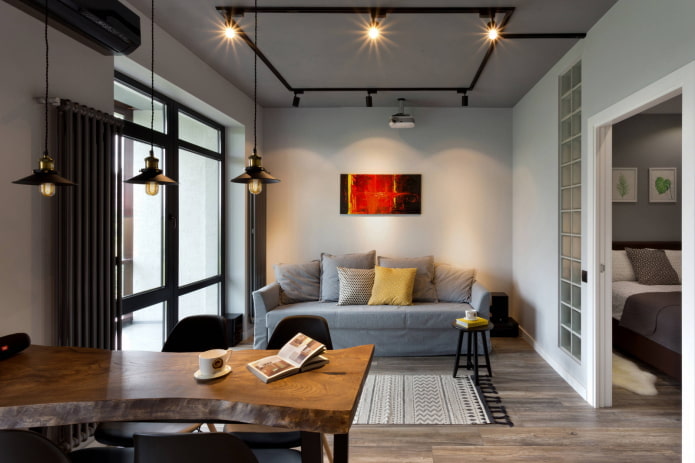
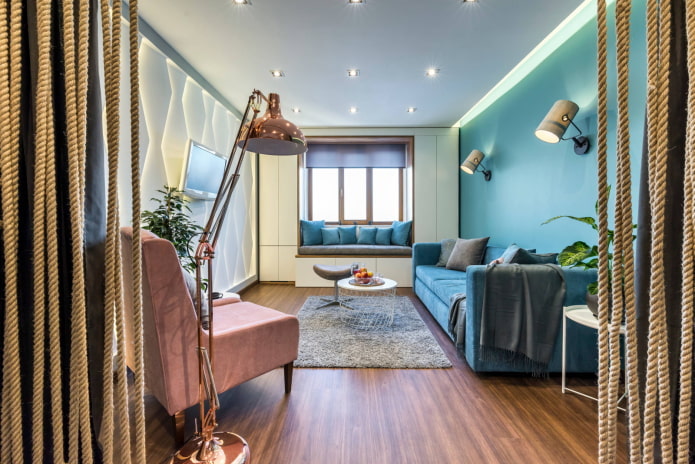
The photo shows a living room with combined lighting, where ceiling spotlights serve as the main lighting.
Chandelier
A chandelier is a traditional option for lighting in the living room. When choosing one, it is worth considering not only the style of the interior, but also the size of the lighting fixture, as well as the degree of light diffusion. A ceiling chandelier fixed close to the surface is suitable for a small living room, and owners of spacious rooms and high ceilings can choose a classic pendant product on a long stand or chains.
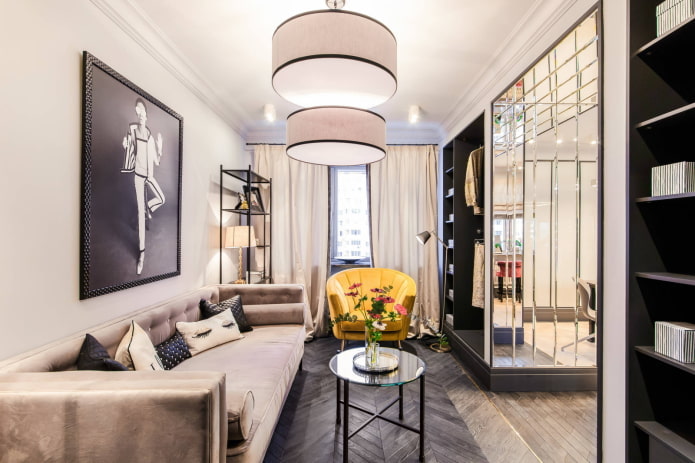
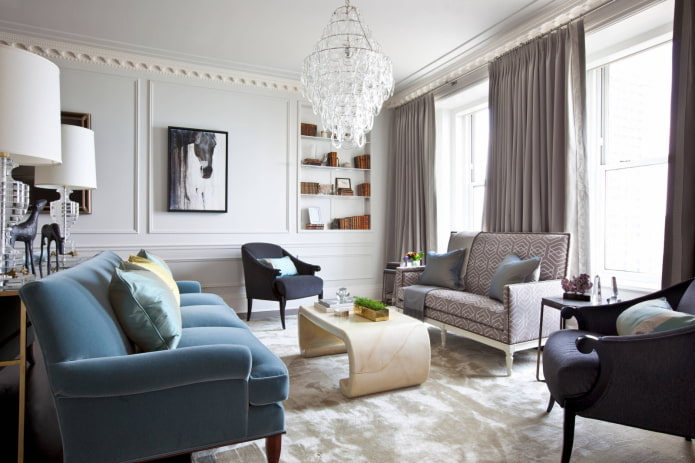
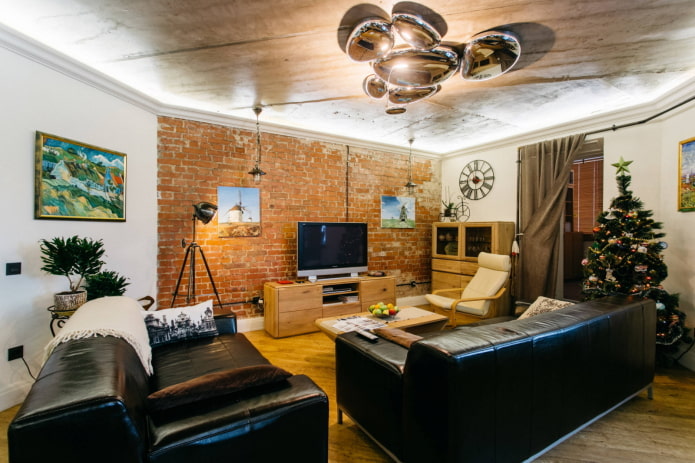
The photo shows a loft-style living room, the low ceilings of which are illuminated by a chic chrome chandelier and LED lighting.
Wall sconces
Wall sconces are often located in the recreation area – behind the sofa or the headboard of the bed, if the living room is intended for sleeping. They can be a pair or act as an independent source of light. In a country cottage, lamps are hung on both sides of the fireplace or above it. Light directed upwards can visually raise the ceiling.
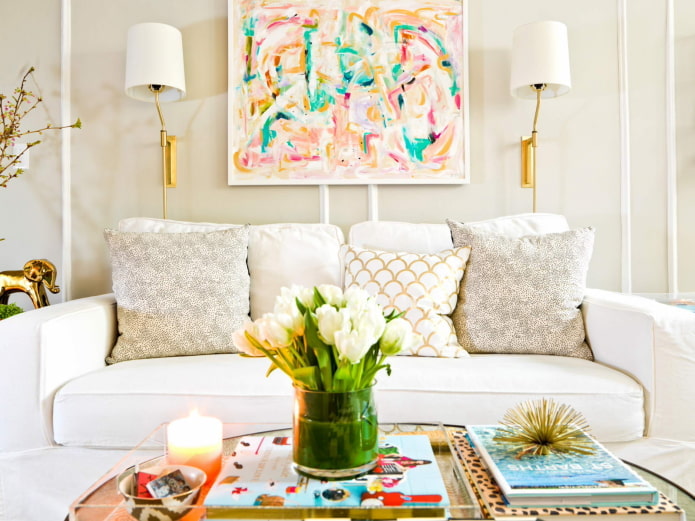
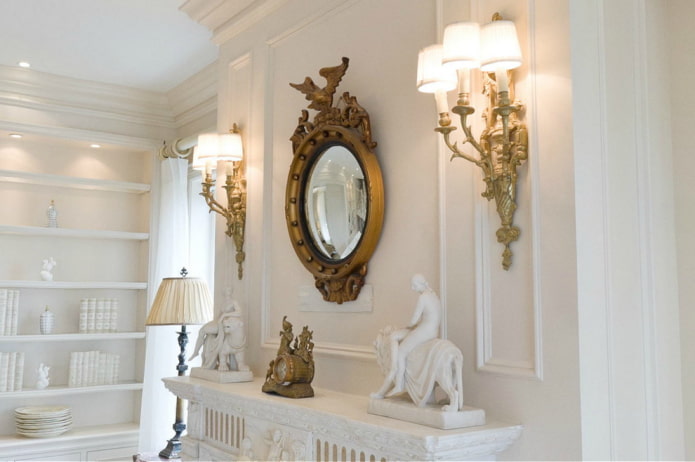
Floor lamp
A floor lamp on a high stand will be appreciated by book lovers – the soft diffusing light of the lampshade directs the light downwards and does not allow the eyes to get tired. This is why floor lamps are often placed in the recreation area. In addition to the lighting function, they can play the role of an object that zones the space.
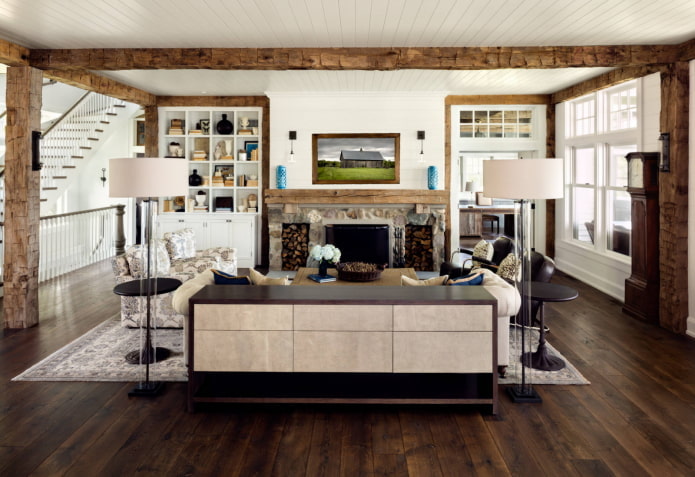
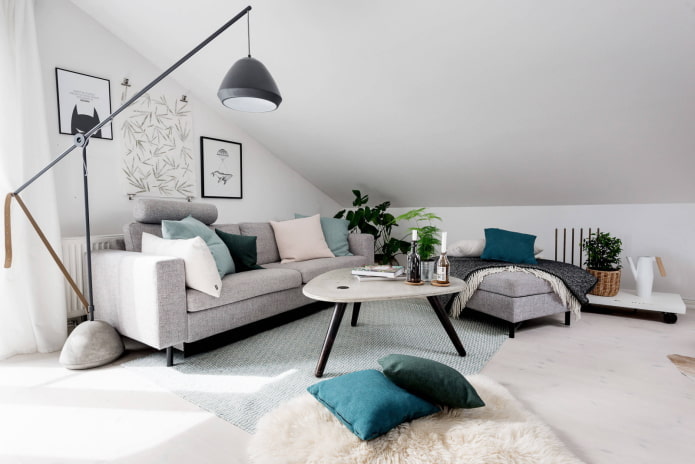

The photo shows a small living room with a floor lamp, which acts not only as a directional side light source, but also as a unique piece of furniture.
Lamp
Thanks to its compactness and mobility, the lamp can be placed on any horizontal surface: a nightstand, chest of drawers or coffee table. Its position can be changed depending on the owner’s needs.

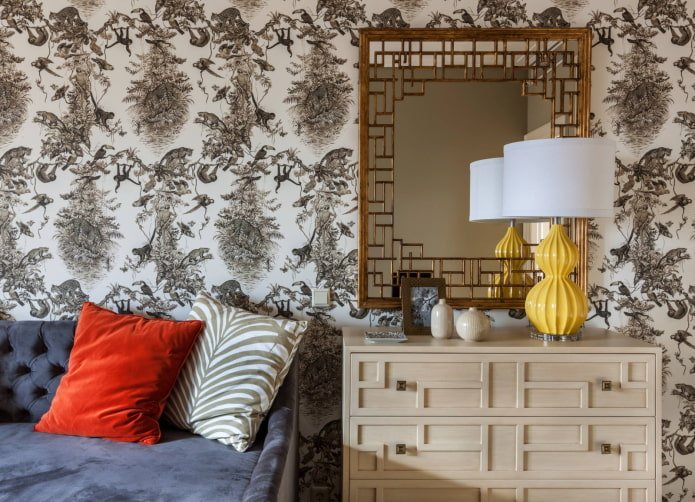
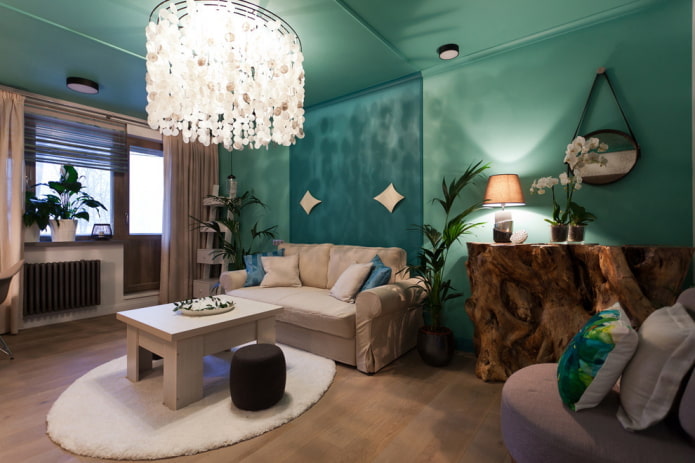
In the photo emerald living room, where an additional source of light is a lamp installed on a slab table.
Pendant lamps
Today, such products with a variety of lampshade designs are at the peak of fashion. For high ceilings, this is the best option, since the light from the pendant lamps can be directed to a specific area or create the desired mood.
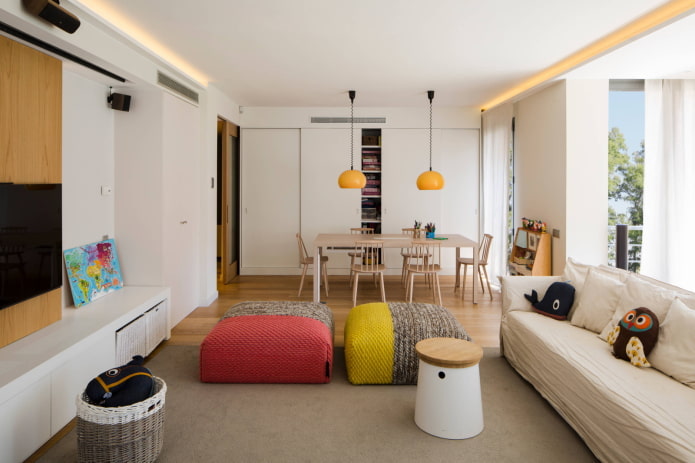

Options
Lighting in the living room is a composition of several light sources. Let’s take a closer look at the main scenarios.
Central
General lighting usually serves utilitarian purposes: by turning on a chandelier or ceiling lights, we achieve a room that is evenly flooded with light. This scenario is perceived by people in different ways: some prefer an abundance of lamps and feel cozy, while others feel uncomfortable. When receiving guests, it is customary to turn on as many lighting fixtures as possible – this sets the tone for an open and friendly conversation.
Central lighting can be implemented either by one chandelier or by combining it with ceiling lights. In the living room, it is better to give preference to warm light – 2600-3500K (Kelvin) is most pleasant for the eyes.
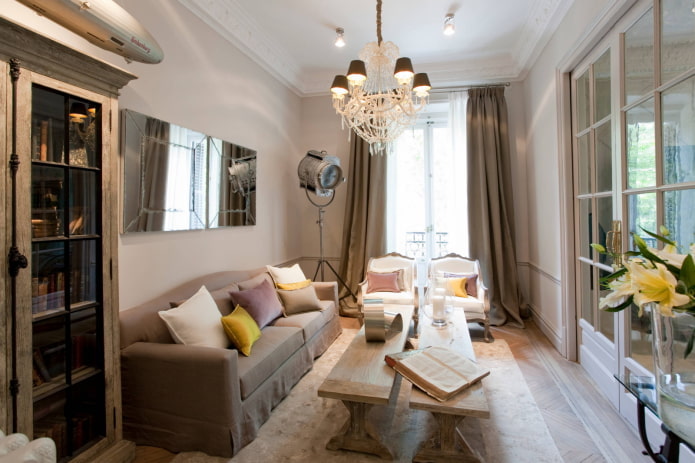
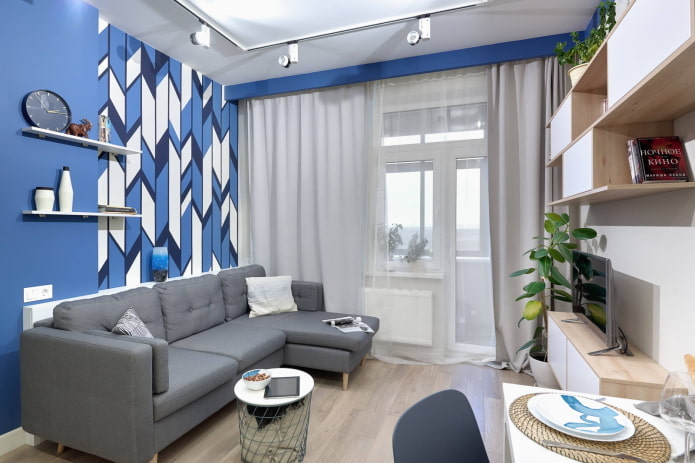
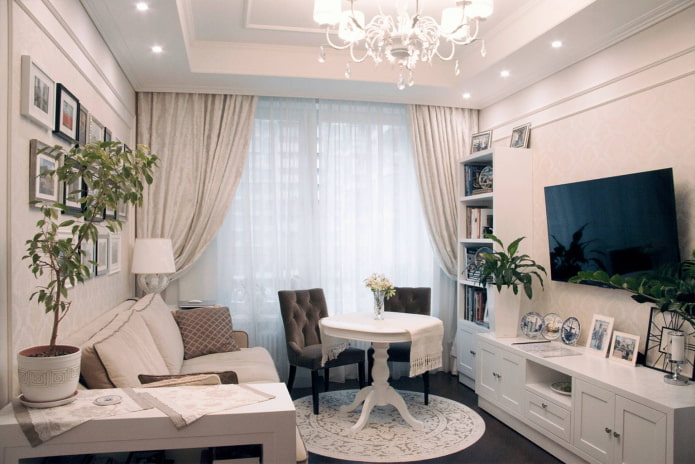
Lighting of functional zones
By locally highlighting a certain area of the room with lamps, we not only achieve comfort by illuminating the necessary piece of furniture, but also zone the space. If the dining area is not adjacent to the wall, but is located in the center, the lamp is hung directly above the table. This technique has been very popular lately. The same applies to the sofa placed in the middle of the living room – it is illuminated either by a floor lamp or a pendant lamp.
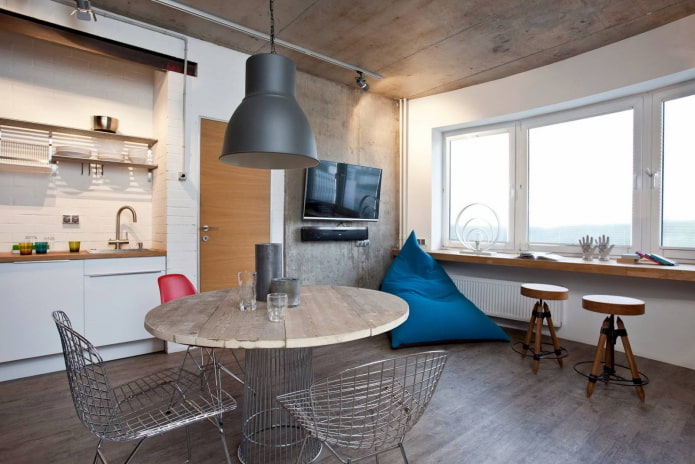
The photo shows a clear example of light zoning: in the studio living room, a relaxation area (blue armchair), a dining table and a place for cooking are allocated.
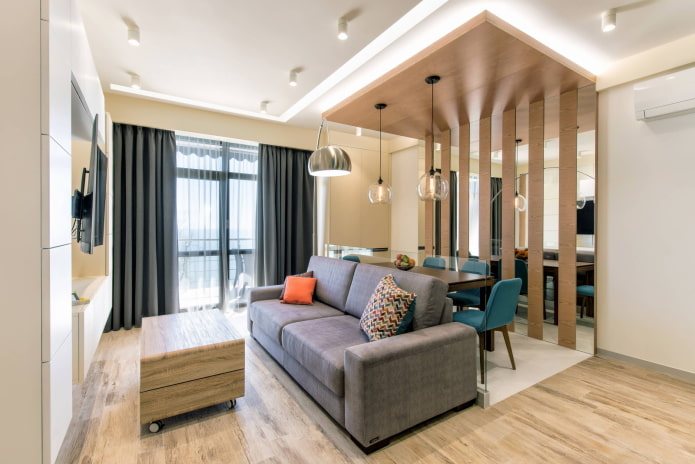
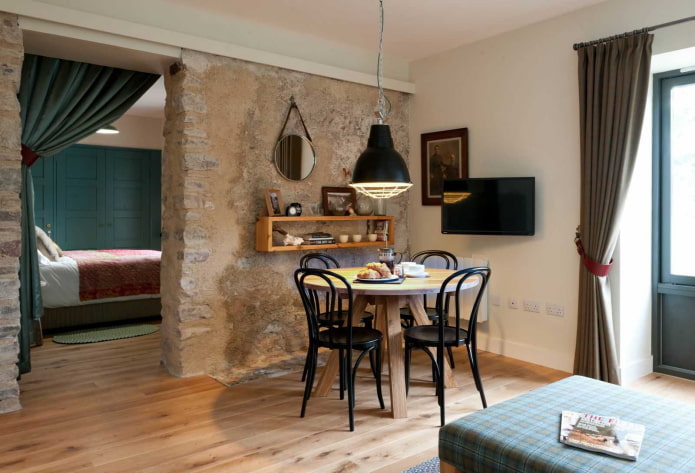
Another option for functional lighting is backlighting the wall around the TV. It is not only beautiful, but also useful: LED strip reduces eye strain, and it is easy to install with your own hands.

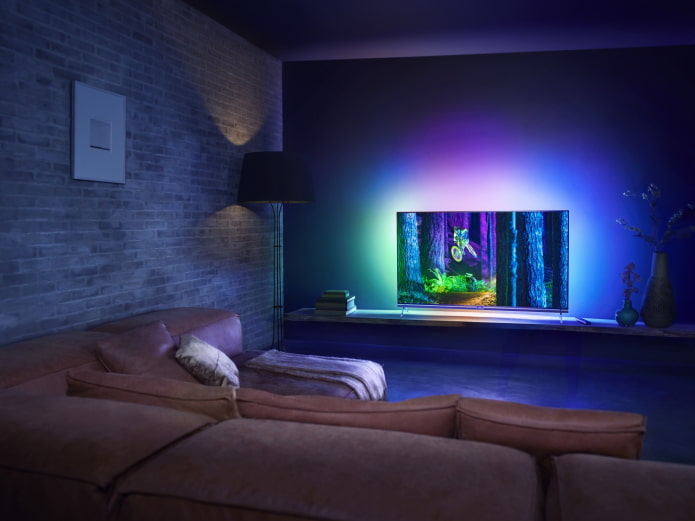
Decorative
It is easy to do without decorative lighting, but the interior can lose a lot. Spotlights or strips, revealing the texture of objects, can turn ordinary things into works of art. The play of light emphasizes what needs to be highlighted. Among other things, designers create entire compositions from unusual lamps.
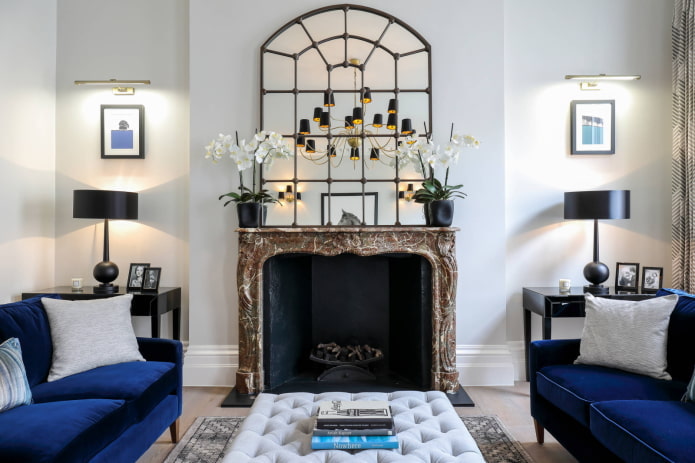
The photo shows a luxurious symmetrical living room with illuminated paintings located on either side of the fireplace.
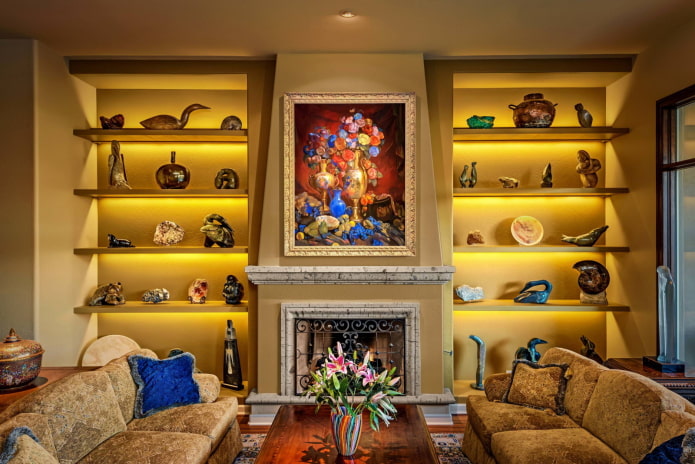
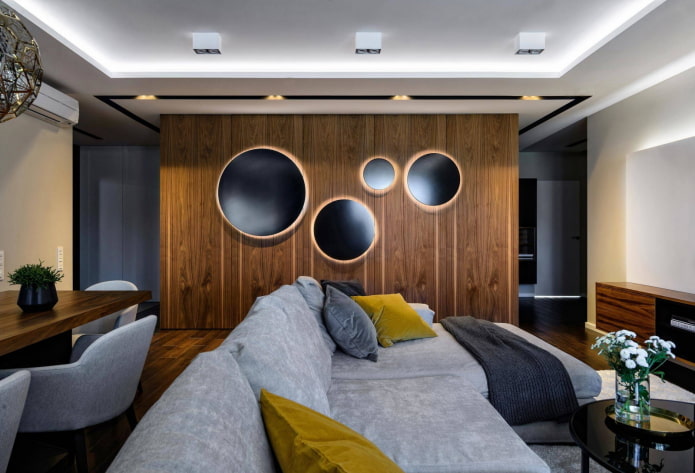
Intelligent lighting or smart
“Smart” lighting allows you to control electrical appliances remotely. Special lamps are equipped with a sensor that reads movement or sound (the famous turning on of the light by clapping your hands). Now, devices that can be controlled using gadgets are gaining popularity. In addition to the fact that the intelligent system brings originality to the environment, it also allows you to save electricity.
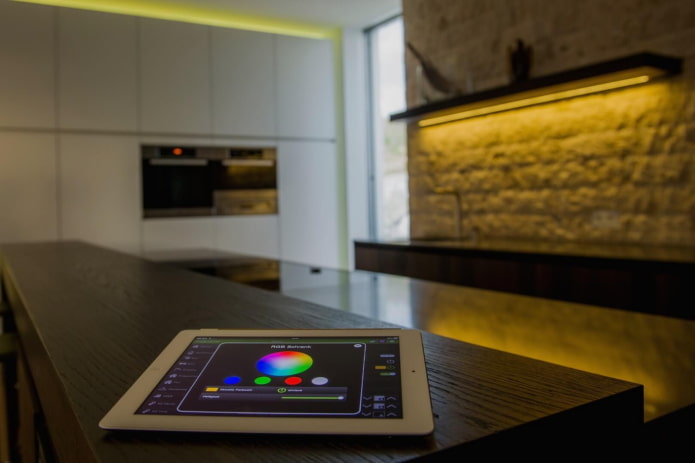
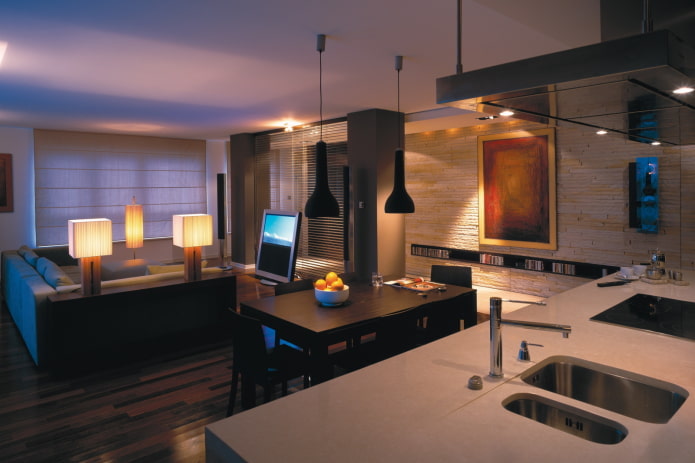
Interior styles
Let’s consider the features of living room lighting in different styles.
Modern style
Lighting in a modern living room implies both beauty and convenience. When arranging a room, you must first ask yourself: why do you need this or that light source? If it plays on maintaining the style, as in a living room with a high-tech bias, then decorative lighting with a cold shade comes to the fore. Its task is to create a special mood, for example, to transfer to the “interior of the future”.
If functionality is a priority, then the owner of the room should plan what he will do in this or that zone (rest, read, work), and then mistakes can be avoided.
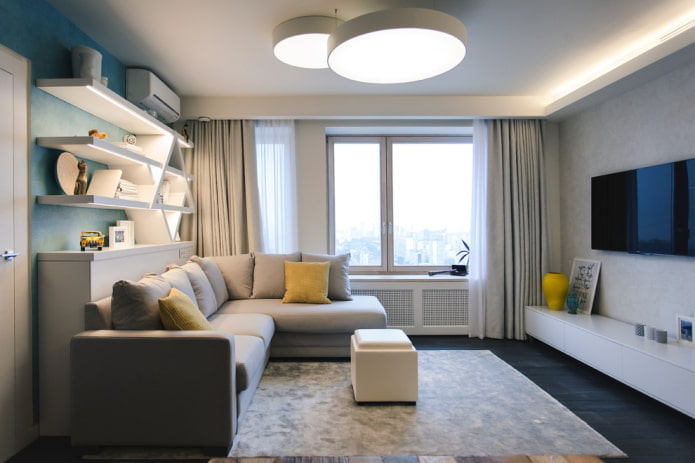
The photo shows a small living room, where the LED strip on the shelves highlights the decor and serves as a source of light for reading, and the LED backlight on the ceiling makes it seem higher.
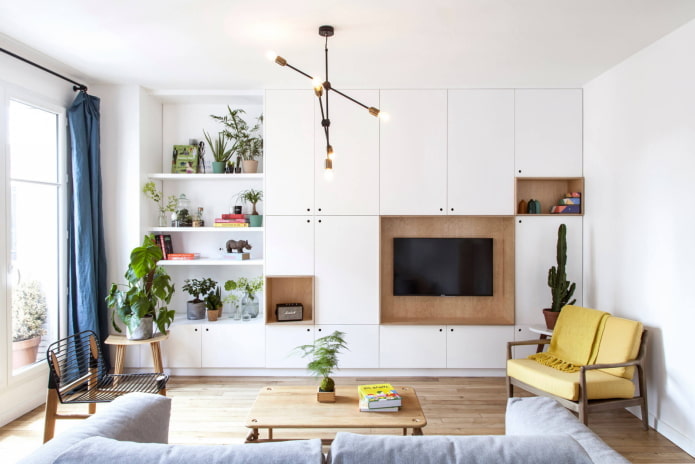
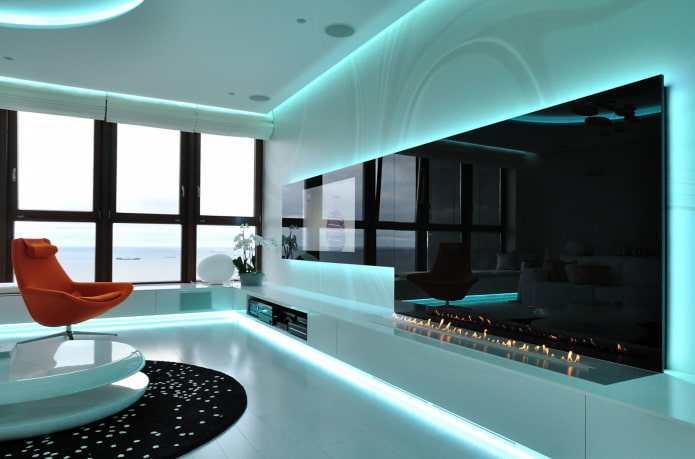
If a modern living room is decorated with a minimalist twist, there should be a lot of light. The concept of minimalism is, first of all, an abundance of air. Natural light is usually lacking, so the walls are painted white, and the light sources are unobtrusive, with simple shapes.
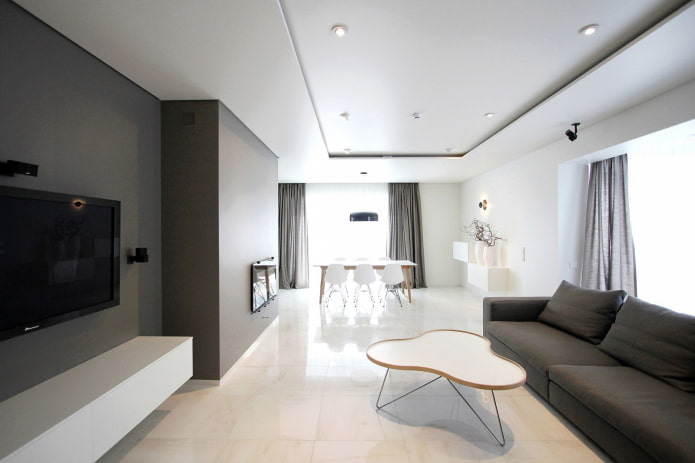
The photo shows a spacious hall in a minimalist style, filled with light. The sources are ceiling lamps, spotlights near the TV, wall sconces and a chandelier above the dining table.
Classic
The main role in the lighting scenario of a classic interior is played by a chandelier. Additional sources are sconces, floor lamps and table lamps. Lighting fixtures should be detailed, richly decorated, with carved or crystal elements. You can also use candlesticks or their imitation.
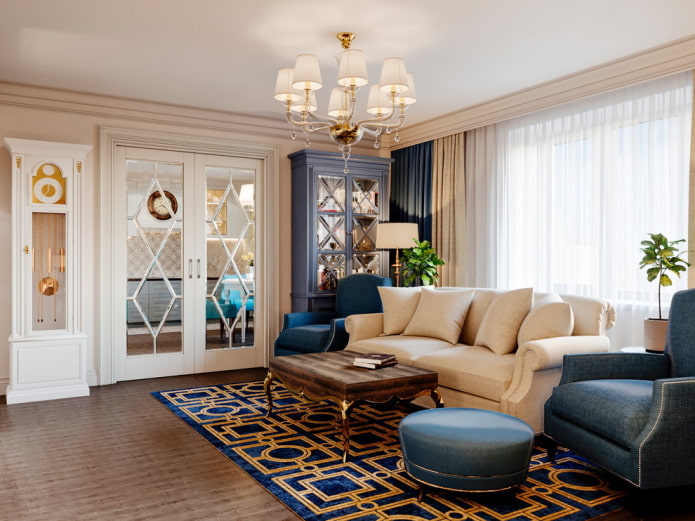
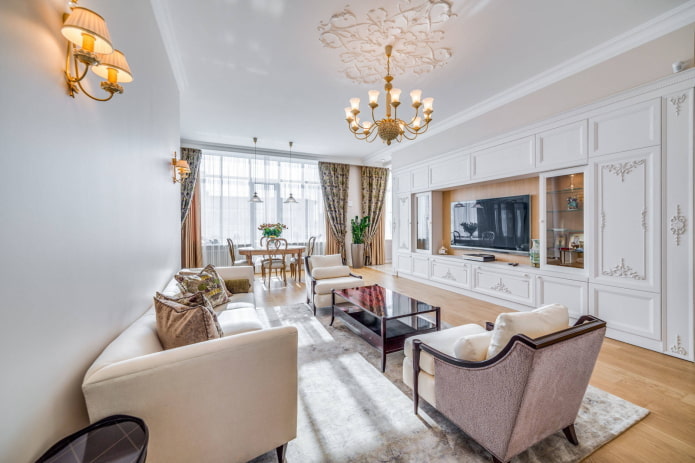
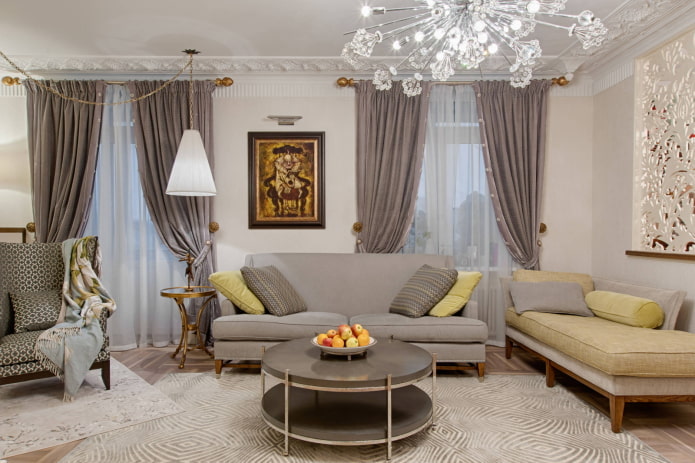
The photo shows an elegant living room in a classic style. The purpose of lighting here is not only to illuminate the room, but also to make an impression.
Loft
Lighting in a loft-style living room, despite the roughness of the finish, must be of high quality. Lighting fixtures are what help maintain a balance between “industrial” elements and airiness: after all, a loft implies a lot of free space.
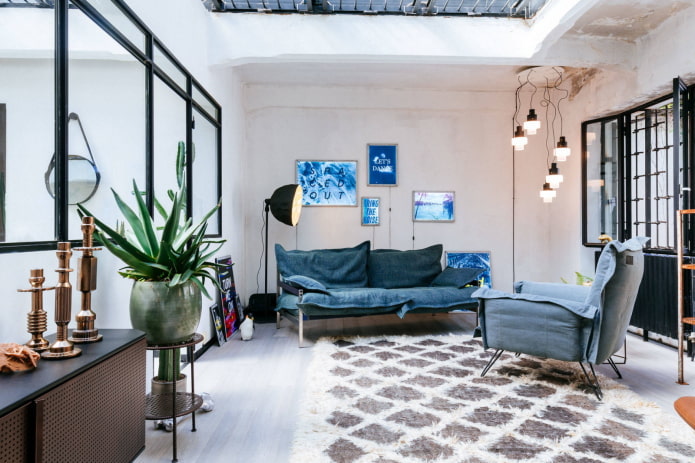
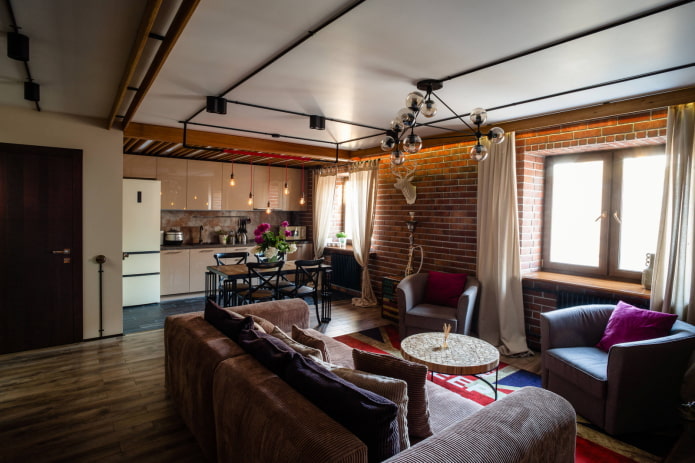

The following fit perfectly into a loft:
- pendant lamps in the form of light bulbs on long wires;
- spotlights on movable tracks or built directly into the ceiling beams;
- chandeliers stylized as street lamps.
Metal and black help to create contrast and go well with wood and brick.
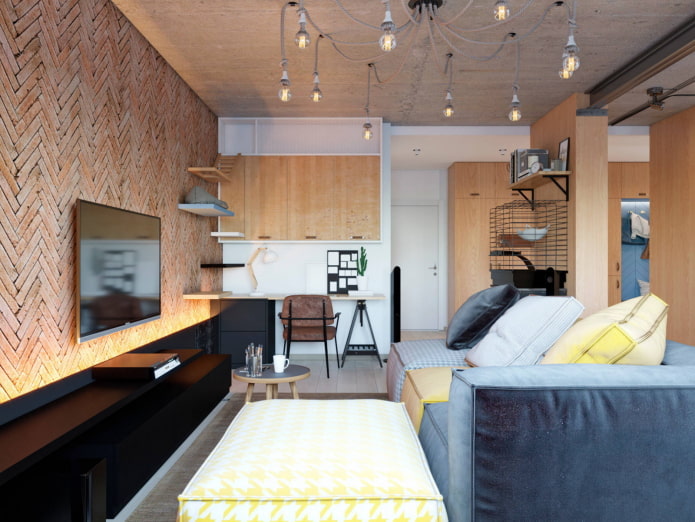
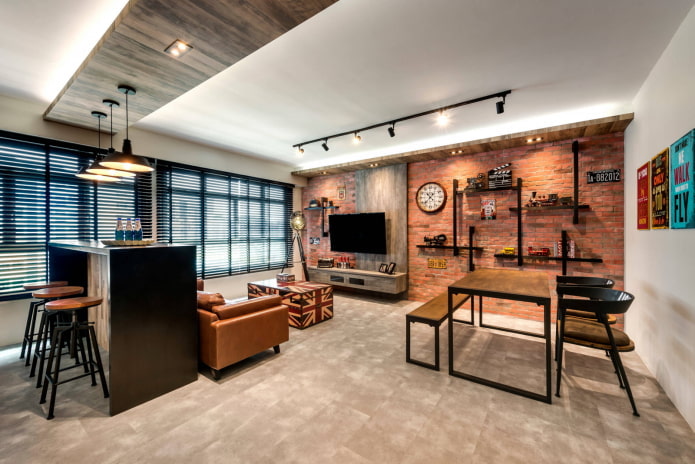
Scandinavian
Multi-level lighting of the living room in the Scandinavian style, which will provide lightness and comfort, should be conducive to relaxation. In this style, you can combine all types of lamps: laconic wall sconces, floor lamps on thin legs and even massive chandeliers. Do not forget about functionality – it is recommended to choose products with the ability to adjust the light (lamps with a dimmer).

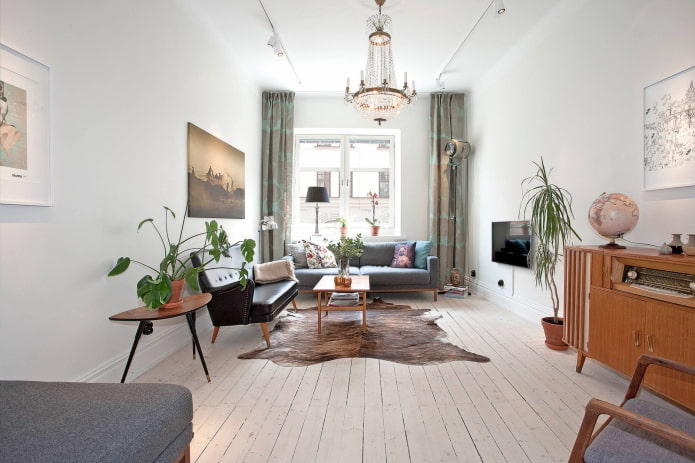
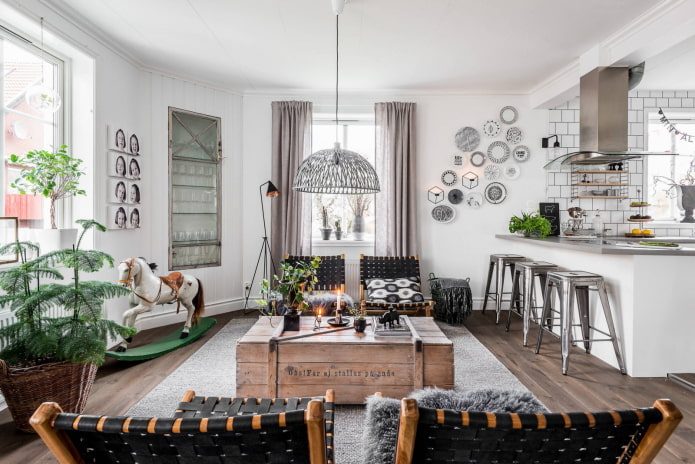
The photo shows a Scandinavian-style living room that combines several lighting fixtures at once.
Design options
Let’s look at a few more interesting ideas for unusual lighting in the living room.
Lighting a living room with a stretch ceiling
Today, a stretch ceiling will not surprise anyone, but unusual designs are still popular in many interiors. A curious solution is a floating ceiling: the effect of the canvas “hanging” in the air is achieved by using lighting between the surface and the structure itself.
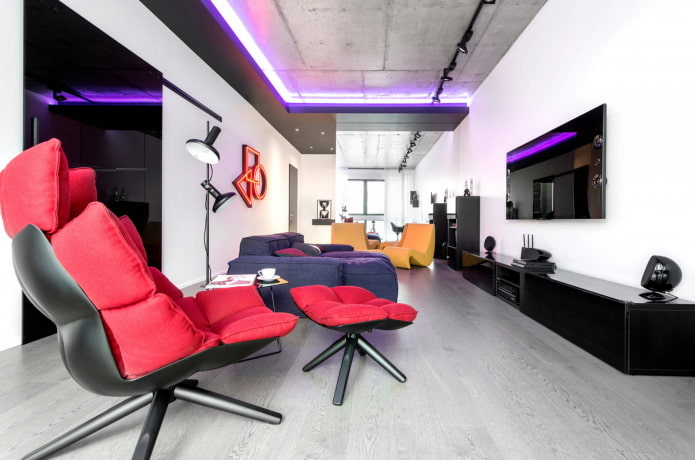
The photo shows a stylish interior with a “floating” structure and purple lighting.
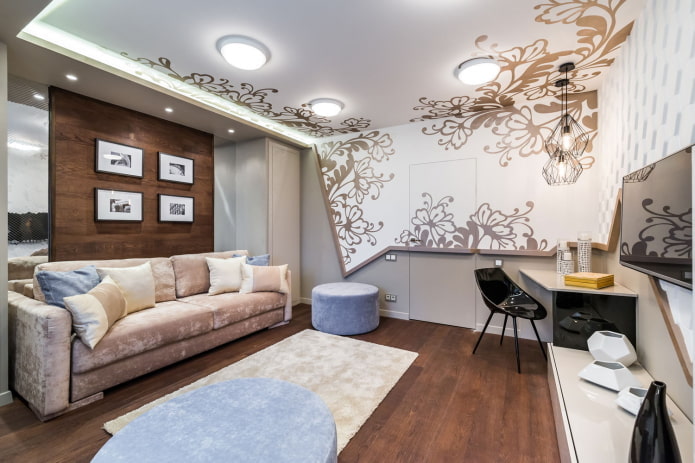
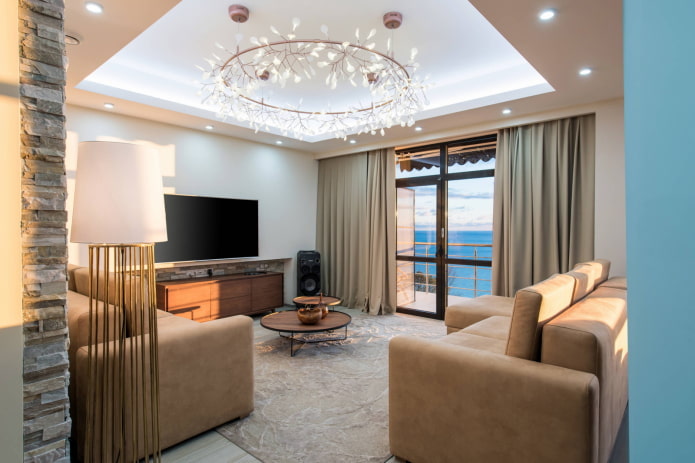
Line lighting that can illuminate only the ceiling or extend to the walls looks stylish and modern.
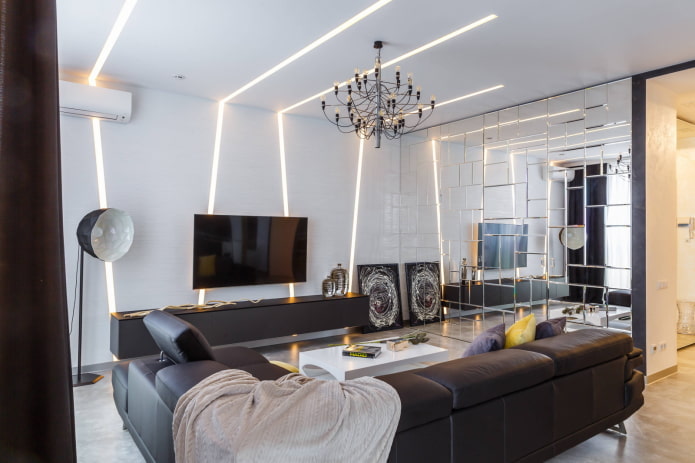
The photo shows linear lighting that makes the interior attractive and original.
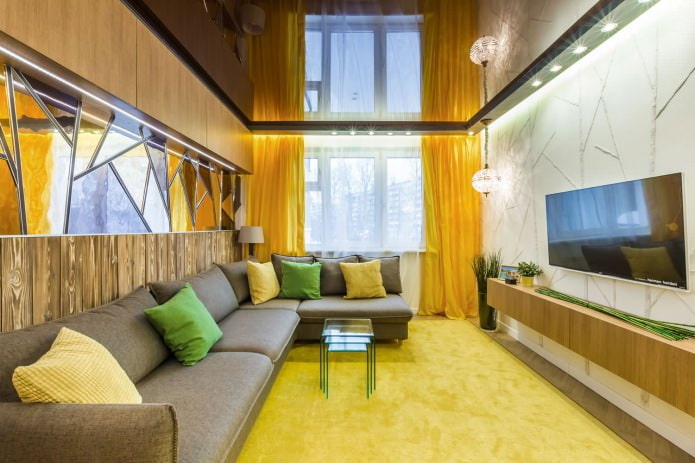
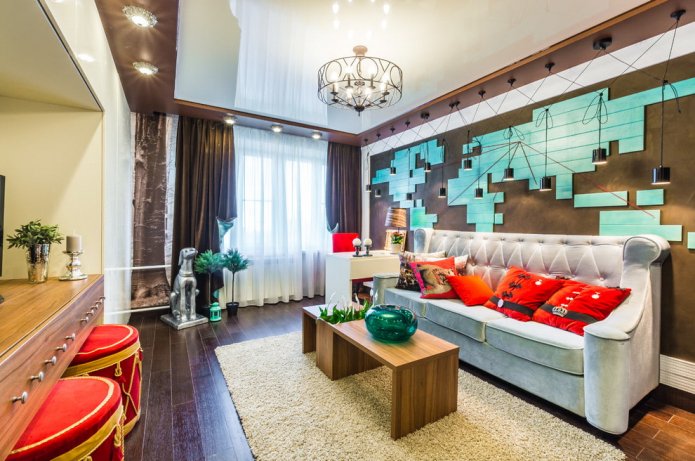
Romantics and connoisseurs of original lighting will choose a ceiling with an imitation of the starry sky. It will create an atmosphere of magic and tranquility. This design is created using light-conducting threads.
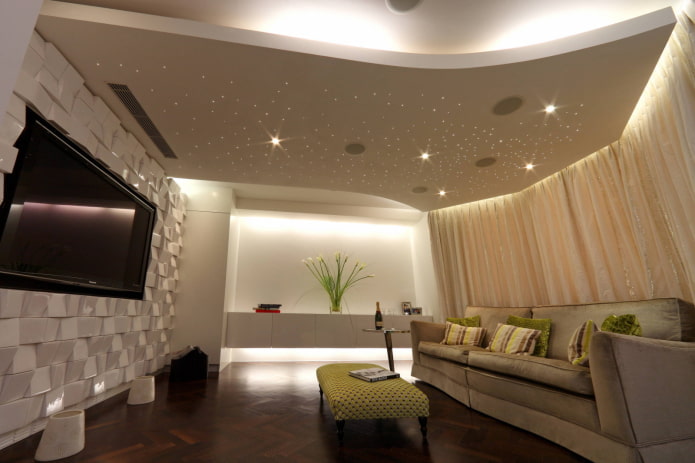
The photo shows a magnificent living room with a soaring ceiling imitating the starry sky.
Examples of hall lighting without a chandelier
If you use ceiling lights as the central lighting in the living room, it is important to correctly calculate their number and the distance at which they will be located from each other. It is best to turn to professionals with this question.
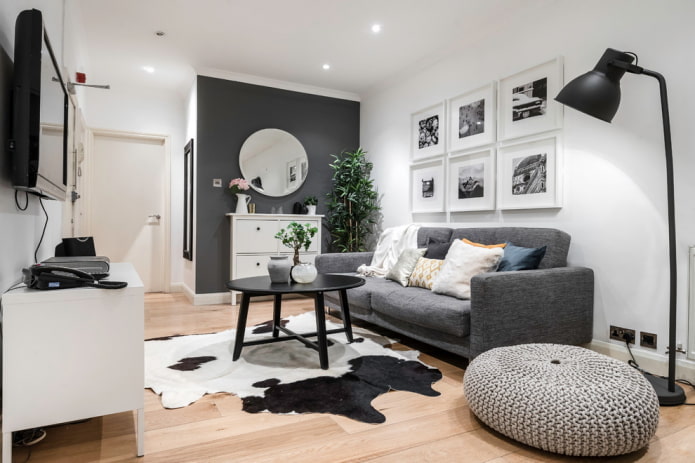
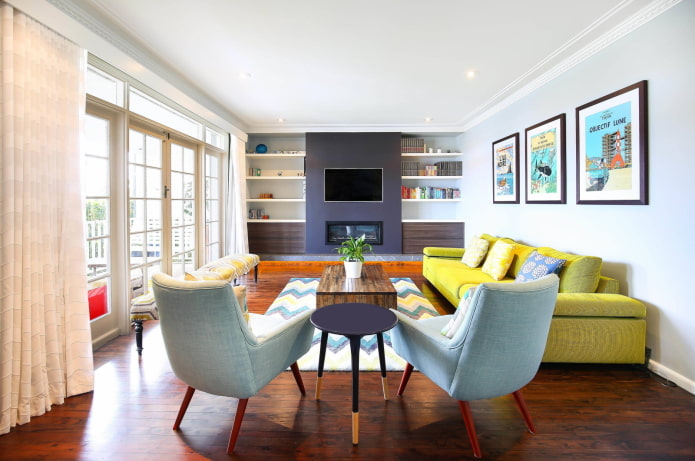
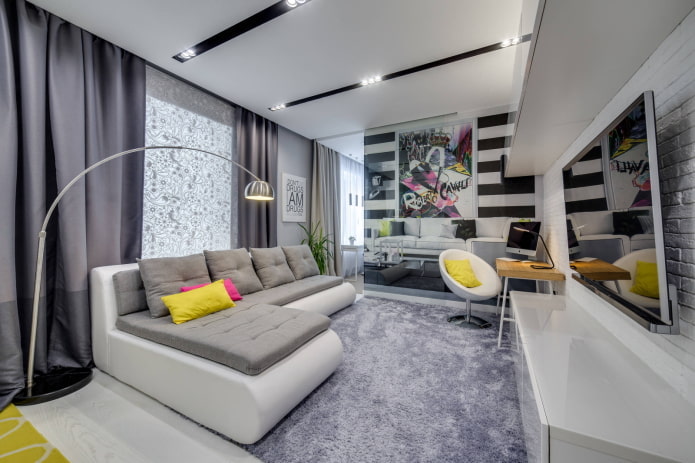
Wall sconces, pendant lights and spotlights will cope with the task of lighting the entire living room.
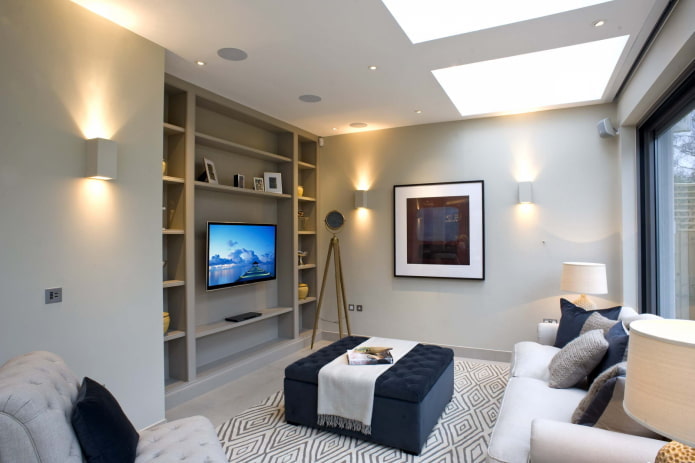
Multi-level lighting
The idea of mixed lighting is to support several lighting scenarios in the hall at once. Ideally, each area can be adjusted “for itself”. To do this, you need to have several switches, as well as the ability to adjust the power and direction of the light.
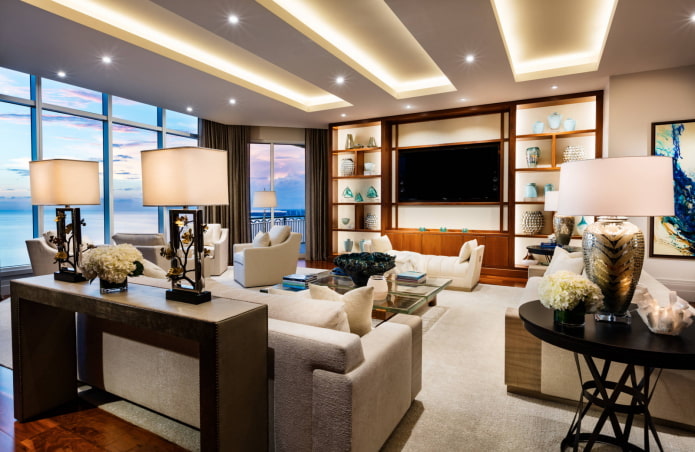
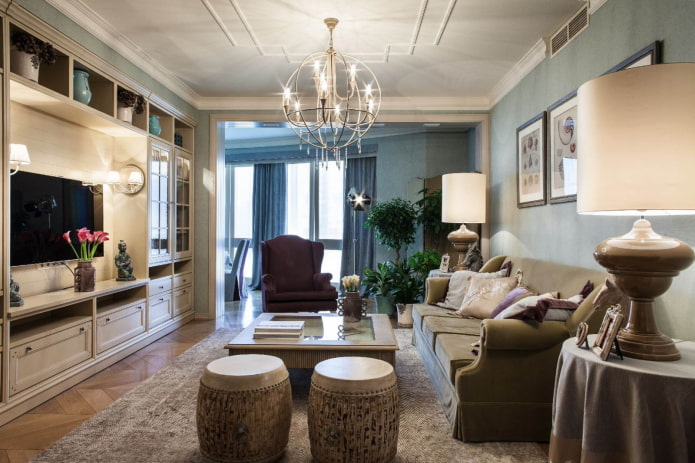
Ideas for zoning with light
Zoning with light is especially relevant in combined living rooms, for example in a studio or Khrushchev, where the kitchen is connected to the room. By highlighting one zone, we shade what is currently not used.
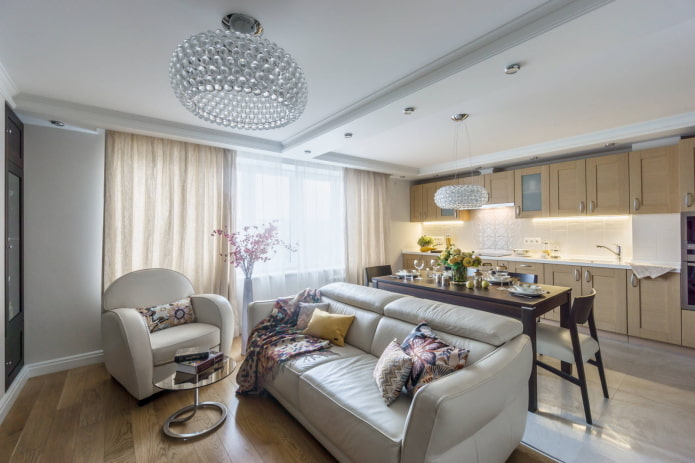
The photo shows a living room, where lighting can be used to highlight several areas: the work surface in the kitchen, the dining area, and the relaxation area.
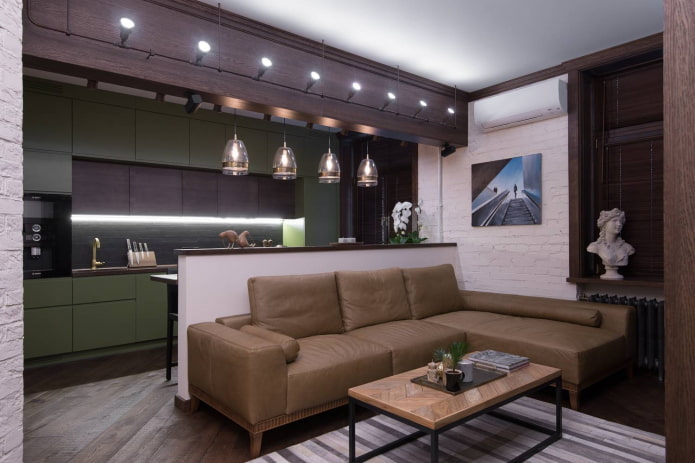
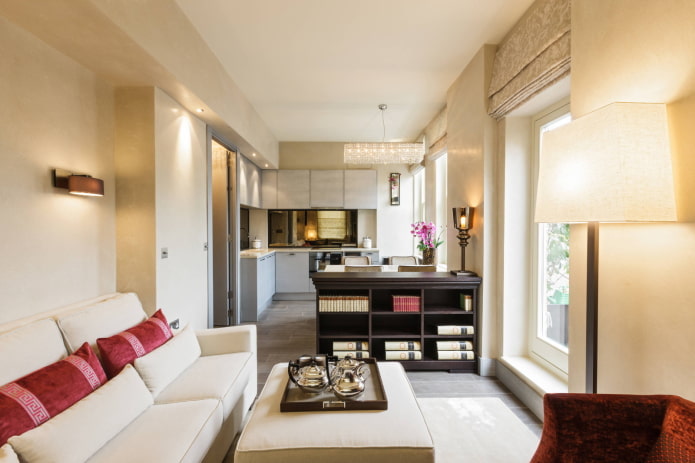
Zonal lighting will be useful if the room is equipped with an office, a place for handicrafts or a table for applying makeup.
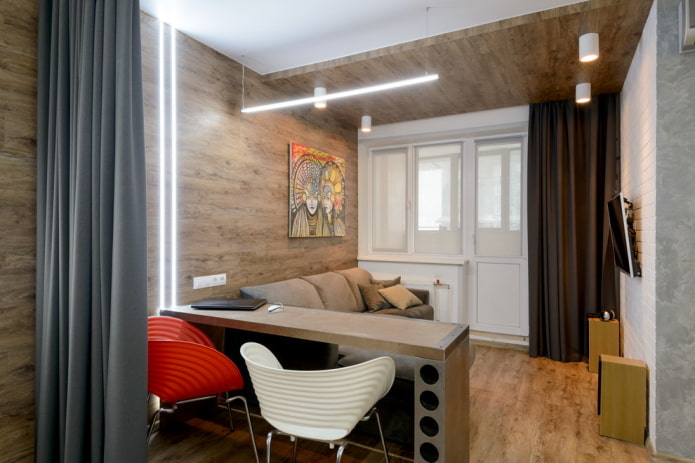
The photo shows a small living room with a multifunctional table, which is highlighted by light.